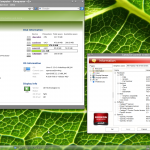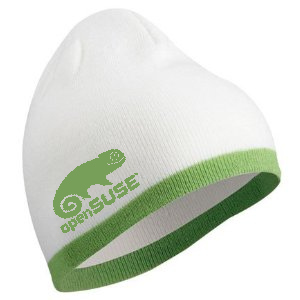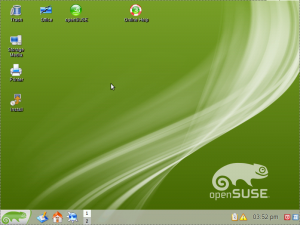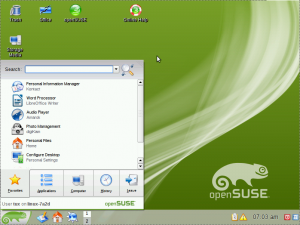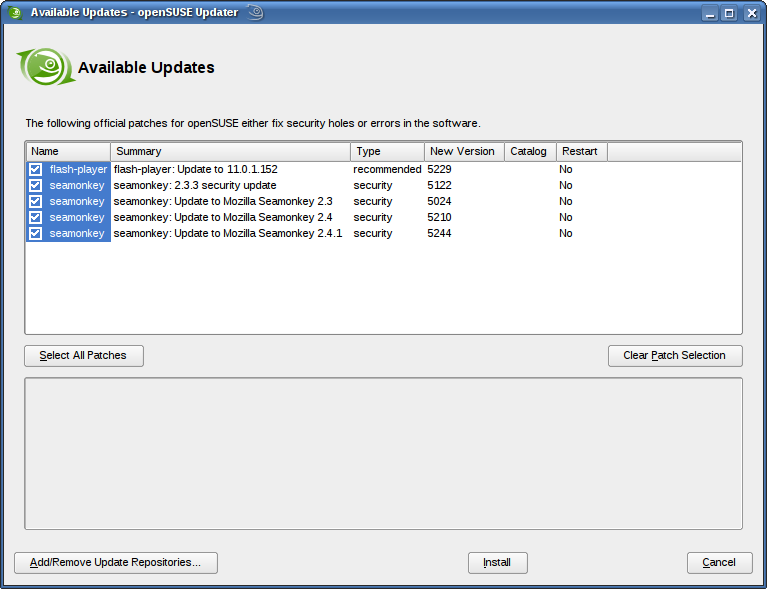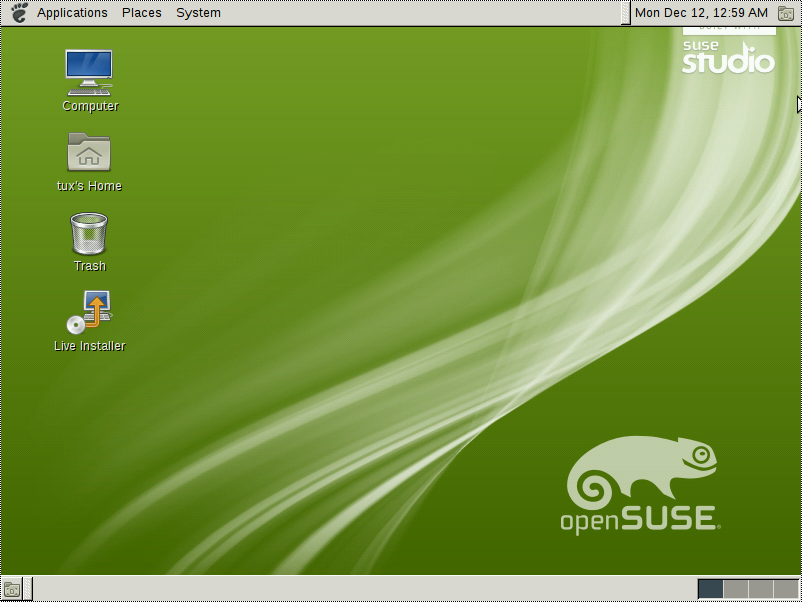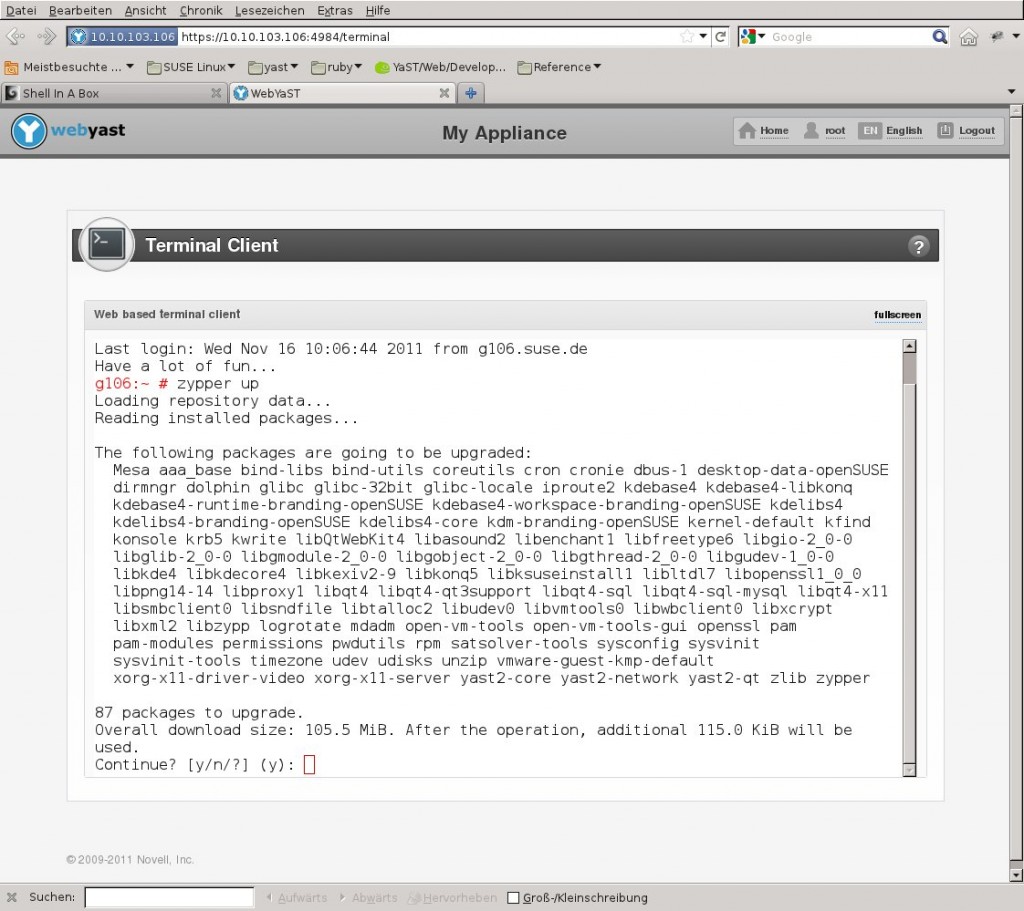I work on automatic testing of one of our products that creates other projects.
And because there is a lot of clouds everywhere I want to use them too. We
have internally an OpenStack cloud (still Diablo release). So I need to solve
automatic uploading of images built in the Build Service. Below I describe my working version.
Archive for the ‘Uncategorized’ Category
CLI to upload image to openstack cloud
April 18th, 2012 by Josef Reidingernew package postgresql-plr. Get the power of R inside your postgreSQL database
March 30th, 2012 by Bruno FriedmannI’m pleased to introduce you to a new available package for postgreSQL database.
The R procedural language extension developed by Joseph E Conway.
R Procedural Language for PostgreSQL
Introduction
PL/R is a library which allow you to add the power of R statistical engine in your database.
This article will show you how to add it and basic usage on a 12.1 installation.
(The package is also available for 11.4)
Become familiar with the project and how it can help you.
The homepage project : www.joeconway.com/plr/
We admit here, that you are able to manage a posgreSQL server instance, and have already one running.
(more…)
ATI/AMD fglrx 8.950 Catalyst 12.2 rpm available for openSUSE 11.3, 11.4, 12.1
March 8th, 2012 by Bruno FriedmannThose informations are obsolete now : please consult //lizards.opensuse.org/?p=8888
AMD/ATI Catalyst 12.2 / fglrx 8.950 rpm are available
News, the build -3 now should build perfectly with kernel 3.2+ & 3.3, Thanks to Sebastian for the patch
Quick Résumé about 12.2
AMD rename their installer, So Sebastian did the same for his script.
I will just copy/google translate/paste here the comment made by Sebastian Siebert on his blog :
AMD has released some time later the driver. The only reason was the fact that AMD has jumped over the version 8.94 because of possible driver issues with some graphics cards. I’ve also updated the packaging script because AMD had unfortunately not include my changes in their AMD installer. (Remember? No time? Who knows … Especially since AMD closed mailing list was down.) It affects even the atieventsd.sh init script. There has been specified for the start of the script in run level 3 and also the XDM (X window manager) provided what IMHO makes no sense. On the other hand, the power mode script (ati powermode.sh) kicked out for good. Since the driver already supports the suspend mode and does not require a helper script anymore.
Driver support now AMD Radeon HD 7950, HD 7970, HD 7990
See more at Sebastian’s blog. Don’t be shy, you can leave there the result of test in english too 😀
or ask in forums, irc and ping freespacer.
See below what to do in case of troubles.
The rpms version 8.950 are available from Thursday March 8th.
KDE 3 got upower support and more
March 2nd, 2012 by Ilya ChernykhAs you possibly know, the last openSUSE release does not include HAL layer which was employed by multiple software to access hardware components. This heavily impacted the KDE 3 users who became unable to suspend and hibernate their systems without installing HAL from a separate repository. Now, thanks to a patch developed by Serghei Amelian, KDE3 got the support for the modern hardware interface, Upower. The update is already published for openSUSE 12.1.
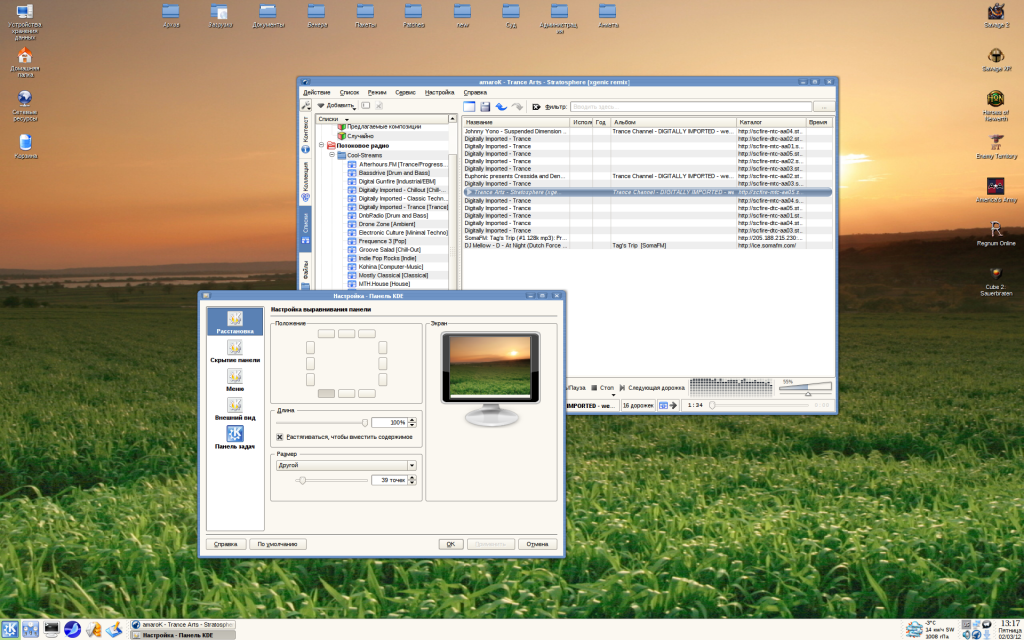
Among other improvements to KDE3 is the possibility to resize tray icons by editing (or creating) the config file ~/.kde/share/config/systemtray_panelappletrc with the following section:
[System Tray]
systrayIconWidth=XX
where XX is the preferred icon size. While in the previous KDE3 releases the icons would got cut, they are scaled now. I changed the default size of the tray icons to 18 px so that they could fit in two rows at medium panel size (see the screenshot).
I also removed the annoying arrows from the applet handles so they not to damage the common style. The applet menu still can be called by right-clicking on the handle.
One additional improvement is that kpdf now got the ability to rotate the document.
Winter outside? Summer inside! Keep Geeko’s head warm!
January 22nd, 2012 by Bruno FriedmannWhy
If you live in the North hemisphere as I do, it’s winter time actually: cold temperature, freezing wind, snow … and 20 years older than your twenties, then you want to keep your head warm.
So the mission was : “what can I design (in other words : what crazy new idea can I have?) funky to wear, well fitting with the car design, and the rest of a geek’s wardrobe?
A beanie sounds perfect!
What
Something simple, quickly available, uni-geek-sex, nice etc. So 10 days ago, I’ve done my shopping with my favorite partner, and agree on a model, then checked cost and delivery time.
Here’s the picture, of how it should look.
I hope you will love it, and fight to get one for you?
Where When can I grab one?
There will be a small series (99) available on openSUSE’s booth during Fosdem (4-5 Feb) in Brussels. I will sold them 10€/piece, and half the money will goes to Fosdem organization. The rest cover the pre-serie cost.
My advice, don’t be in late! 😀
How to build your own?
If you can’t attempt Fosdem, or can’t have one, you can easily start your own local production. I’ve choose the Myrtle Beach (MB 7584) white/lime,a Beanie with contrasting border, 100% polyacryl. They should be available in any clothes advertising shop. Then the logo is printed on it, better to have it embroidered but this is more expensive.
Have fun!
How to be user friendly
December 21st, 2011 by cyberiadAfter having read an answer containing a rude “RTFM” on one of the openSUSE mailing lists I think I have to make a point. A very important one, since it seems to become a habit to be brief and put information into single spots only, which might be found with Google.
Helping users, and I don’t mean only new users, cannot be done with pointing them to Google all the time unless it’s a very well-known issue. A Unix system like Linux comes from a very good tradition of man pages, howtos and other local information e.g. files in /usr/share/doc/packages/. Unfortunately this tradition seems to be dying. This wouldn’t be dramatic if there would be more openSUSE specific documentation, but this is not the case. It’s either brief, old or fragmented over the net in blogs or mailing list archives. Especially the latter may be a good source for solving problems, but some threads are filled with long discussions and the satisfied solution cannot be found with a few glimpses or even clicks.
Therefore all of us need to write more documentation that can be found easily and at best on *.opensuse.org servers. Otherwise the search function there is pointless. The best place for documenting solutions to common and not-so-common problems is the support database in the openSUSE wiki:
http://en.opensuse.org/Portal:Support_database
Writing things in your personal blog is good and welcome, but at the same time there should be an SDB article about the provided solution.
I have to add that there are a lot of people who already put a lot of effort into documenting things. This post is not to criticize, but to support them, so that there are not only a few who contribute valuable help to users.
openSUSE 12.1 KDE3 LiveDVD is ready
December 18th, 2011 by Ilya ChernykhThis is an openSUSE 12.1 KDE3 LiveDVD from the KDE:KDE3 repository maintainer.
It continues the KDE3 series published by me for previous openSUSE releases, 11.3 and 11.4
Unlike other similar LiveCDs, this build includes extended set of software, not only from official openSUSE 12.1 repository, but also from KDE:KDE3 repo.
The image includes openSUSE-specific presets and an auto-updater applet which allows to keep your installation up-to-date.
Since the final KDE3 release KDE3 in openSUSE repository undergone several changes.
The most visible fixes include the appearance of the “classic” style of the taskbar (the button of the active window now appears pushed, something that was broke in the last KDE3 release); the selection of the icons on the desktop now resembles the style used in the file manager with rounded corners. The LiveDVD ships with openSUSE artwork and exclusive openSUSE-style window decorations.
Direct download link:
http://susestudio.com/download/2dd3fc0c6ad40f78c4a53b0e4fdd7a8b/OpenSUSE_12.1_KDE3.x86_64-1.0.7.iso
Appliance link in Suse Studio:
http://susestudio.com/a/vv1af0/opensuse-121-kde3
The appliance is capable of being cloned so to create derivatives.
openSUSE 12.1 Gnome 2 LiveCD is available
December 12th, 2011 by Ilya ChernykhI used Suse Studio to create this openSUSE 12.1 Gnome 2 Live CD.
The direct ISO download link:
http://susestudio.com/download/54fa2861498cb365921d7bbaf1ca7009/OpenSUSE_12.1_Gnome2.x86_64-1.0.9.iso
Appliance:
http://susestudio.com/a/vv1af0/opensuse-121-gnome2
openSUSE 12.1 KDE3 LiveCD
December 2nd, 2011 by Marcus MoellerAs KDE3 is again part of the official openSUSE 12.1 repositories (thanks to all who made this happen), I took the chance to create an installable livecd. Besides a preconfigured KDE3 desktop, it contains additional software like Mozilla Firefox, Thunderbird and LibreOffice. YaST2 is available for administrative tasks like system configuration or software management. The media does not contain all language packs due to size limitations, but they could be easily installed. The KDE3 language packages are named kde3-i18n-$LANG, e.g. kde3-i18n-eo.
In order to to emphasize the feeling of good old times, the artwork is based on SUSE 10.1. The kde3-gtk-qt-engine is included to give a unique experience over GTK and QT applications and KDE4 applications make use of the Plastique widget style and Plastik colors.
The x86_64 and the i686 iso images have been created using the kiwi tools. You can download the kiwi description and build your customized version. Just make sure you have kiwi and kiwi-config-openSUSE-12.1 installed and run create_livecd.sh from the archive. (You can adjust the image_arch variable within the script according to your build architecture)
If you got any further questions concerning KDE3 on openSUSE, please take a look at the openSUSE KDE3 wiki page and join the mailinglist.
PS: And please don’t forget to vote for me 😉
WebYaST Terminal Plugin
November 16th, 2011 by Stefan SchubertDuring the SUSE Hackweek Vladislav Lewin (member of the YaST team) has had the nice idea writing a WebYaST plugin which provides a console terminal witch which the user has the opportunity to login on a console on the target machine. He sould be able to start any console based application there ( of course even YaST :-))
So the benefit is to login on a target linux machine from a computer which
- has not to be a unix machine and
- is without any VPN configuration stuff.
Just a simple Web browser is needed to get a login via the Web on another linux machine:
Mainly the architecture is based on shellinabox which we have packaged together with the WebYaST Terminal Plugin. These RPMs are now available for download.
BTW: You will be surprised that the source code of the WebYaST Terminal Plugin has about 100 lines only !!!
How to get:
